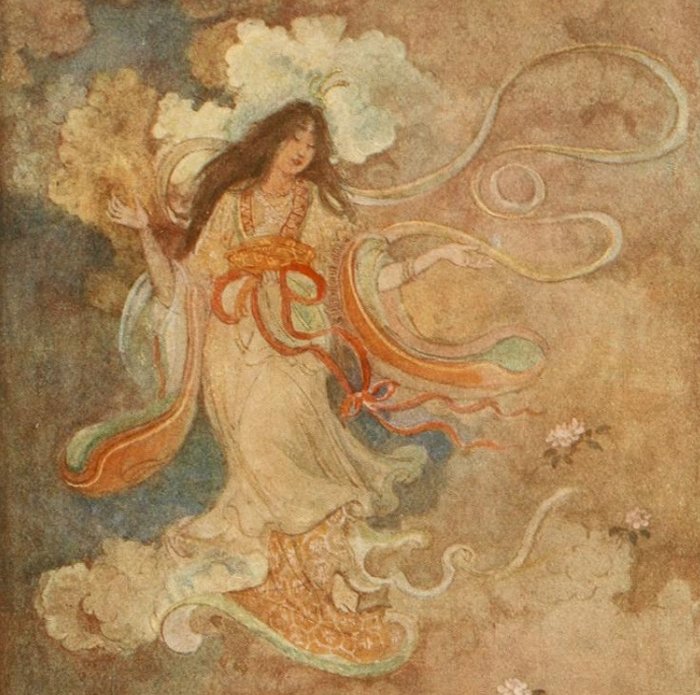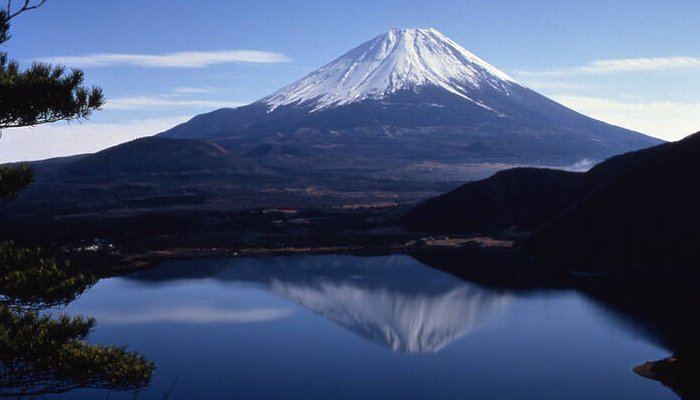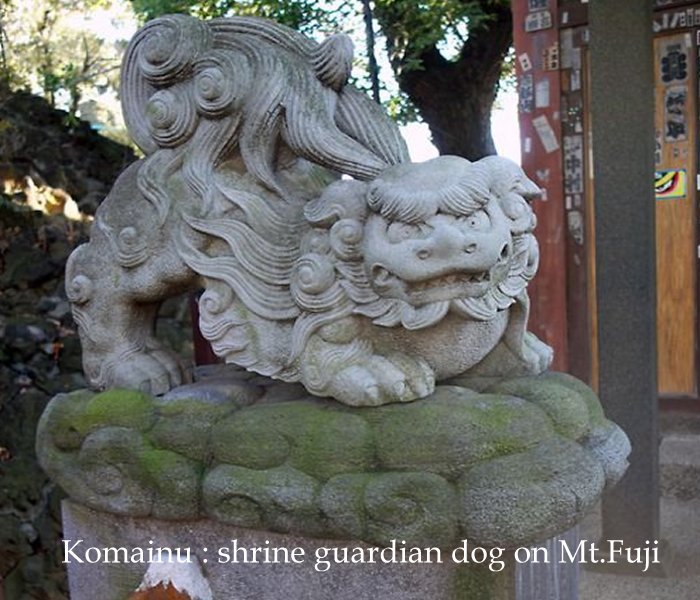Towering Sacred Mt. Fuji: Abode Of The Immortals In Ancient Japanese Beliefs
A. Sutherland - AncientPages.com - Sacred Mount Fuji on Honshu Island, Japan, has been a widely venerated mountain in Japan since ancient times. People of both Buddhist and Shinto faiths considered it an Abode of the Immortals.
Sengen Shinto goddess of mount Fuji flies, Japan. Image credit: Evelyn Paul (1883–1963). Source: Sacred Texts. Public Domain
The Japanese have long regarded certain mountains as objects of worship. They believed that mountains are sacred places where numerous gods reside. This belief still lives on and is continuously practiced in Japan.
The present-day Mount Fuji is a combination of three successive volcanoes. Fuji itself is thought to have formed in the past 2.6 million years on top of a far older base, about 65 million years old.
This mighty mountain became admired and feared as well. Mount Fuji, whose magnificent peak has been spectacularly described as “the Supreme Altar of the Sun,” has been a place of pilgrimage for centuries.
According to the old Shinto tradition, the pilgrims, wearing white clothes, and oversized straw hats, formed processions accompanied by ringing bells and chanting:
“May our six senses be pure, and the weather on the honorable mountain be fair.”
The pilgrims traditionally believed they could wash away their sins by climbing the mountain from the bottom to the top and then back.
Fujisan © Policy Planning Office, Minobu Town
High snow-capped mountains made people aware of the source of abundant pure water.
Ancient belief says that the mountain deities could miraculously call clouds to collect rain when needed.
We learn from the great works of prominent British Japanologist Professor Basil Hall Chamberlain that “down to times almost historical the country round Fuji formed part of Aino-land, and all Eastern Japan is strewn with names related to Aino people.
In fact, another name of Mt Fuji is “Fuchi,” which was also the name of the Aino Goddess of Fire, the guardian of home and hearth in the beliefs of semi-nomadic Aino people who inhabited the northern islands of Japan.
A Buddhist myth tells that Mt. Fuji was a female and another mountain, Mt. Haku (a male), was higher. Angry Fuji beat the god of Mt. Haku on the head, cracking his skull into eight smaller mountain peaks. Her action made her the highest mountain in Japan forever.
Another Buddhist myth says that Mt. Fuji represented the source of Water of Life, which flowed from a stream on the slopes guarded by Sengen, the daughter of the mountain god.
As a site of spiritual significance, Mt Fuji was divided into three zones. The everyday world had its location at the bottom of Mt Fuji in the zone called Kusa-yama.
Another zone, Ki-yama, was the transient realm between the world of humans and the abode of gods. The third zone, Yake-yama, located at the top, was the realm of the gods, Buddha, and death.
Fuji was once a mighty active volcano. Japan is located in the Pacific “Ring of Fire”; many of Japan’s mountains are of volcanic origin.
There are currently 186 volcanoes, sixty of which are active.
It was natural that people heavily dependent on agriculture worshiped such mountains.
Their worship is frequently linked to the worship of countless watersheds and streams. Over the centuries, the people built numerous shrines on the summits of other mountains, not only Mt Fuji, and venerated many various mountain deities.
However, the mighty Mt. Fuji, the center of the world, will stand forever above all of them,
Mt Fuji is the highest and youngest of the Japanese mountain formations. This symmetrical volcano rises to 3776 m (12,388 feet) and represents the symbol of Japan. In the earthquake that occurred in 286 AD, there was a strong, fiery eruption and the mighty Mt Fuji (also known as Fujiyama) emerged suddenly during only one night.
The base of Fuji is about 125 km in circumference, while the crater at the summit has a surface diameter of about 500 meters, and sinks to a depth of 250 meters. Fuji itself is thought to have formed in the past 2.6 million years on top of a base that is far older, about 65 million years old. The present-day Mount Fuji is actually a combination of three successive volcanoes.
Written by – A. Sutherland AncientPages.com Staff Writer
Copyright © AncientPages.com All rights reserved. This material may not be published, broadcast, rewritten or redistributed in whole or part without the express written permission of AncientPages.com
Expand for referencesReferences:
R. Alexander, Myths, Symbols and Legends of Solar System Bodies
F. Hadland Davis, Myths & Legends of Japan
More From Ancient Pages
-
 3,000-Year-Old Fortress Built By The Mysterious Votadini Tribe Discovered On Top Of Arthur’s Seat
Archaeology | Sep 11, 2020
3,000-Year-Old Fortress Built By The Mysterious Votadini Tribe Discovered On Top Of Arthur’s Seat
Archaeology | Sep 11, 2020 -
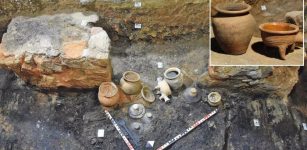 Uniquely Well-Preserved Medieval Kitchen Unearthed North of Moravia
Archaeology | Aug 11, 2022
Uniquely Well-Preserved Medieval Kitchen Unearthed North of Moravia
Archaeology | Aug 11, 2022 -
 On This Day In History: Sir Thomas Brisbane, Astronomer, Soldier And Governor Was Born – On July 23, 1773
News | Jul 23, 2016
On This Day In History: Sir Thomas Brisbane, Astronomer, Soldier And Governor Was Born – On July 23, 1773
News | Jul 23, 2016 -
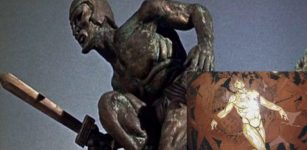 Earliest Fascinating Concepts Of Artificial Intelligence And Robots In Ancient Myths – Examined
Archaeology | Mar 6, 2019
Earliest Fascinating Concepts Of Artificial Intelligence And Robots In Ancient Myths – Examined
Archaeology | Mar 6, 2019 -
 65 Byzantine-Era Tombs Unearthed In Stratonikeia – World’s Largest Marble City
Archaeology | Feb 24, 2017
65 Byzantine-Era Tombs Unearthed In Stratonikeia – World’s Largest Marble City
Archaeology | Feb 24, 2017 -
 Did Easter Islanders Commit ‘Ecocide?
Places | Jun 22, 2024
Did Easter Islanders Commit ‘Ecocide?
Places | Jun 22, 2024 -
 Invisible Ink On Antique Nile Papyrus From The Island Of Elephantine – Revealed
Archaeology | Aug 21, 2019
Invisible Ink On Antique Nile Papyrus From The Island Of Elephantine – Revealed
Archaeology | Aug 21, 2019 -
 Puzzling Ancient Artifacts Of Unknown Origin And Purpose
Artifacts | Mar 10, 2014
Puzzling Ancient Artifacts Of Unknown Origin And Purpose
Artifacts | Mar 10, 2014 -
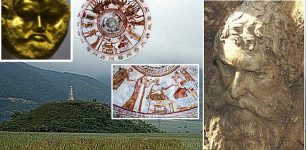 Remarkable Thracian Tomb In Huge Mound Necropolis Of Kazanlak, Bulgaria
Featured Stories | May 13, 2024
Remarkable Thracian Tomb In Huge Mound Necropolis Of Kazanlak, Bulgaria
Featured Stories | May 13, 2024 -
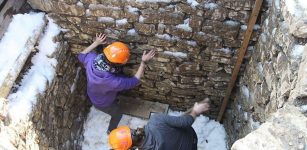 Did Ancient Romans Use Four-Meter Deep Shafts As Refrigerators During Summer?
Archaeology | Apr 6, 2018
Did Ancient Romans Use Four-Meter Deep Shafts As Refrigerators During Summer?
Archaeology | Apr 6, 2018 -
 New Egyptian Dinosaur Helps To Reconstruct Evolution Of Dinosaurs In Africa
Archaeology | Jan 30, 2018
New Egyptian Dinosaur Helps To Reconstruct Evolution Of Dinosaurs In Africa
Archaeology | Jan 30, 2018 -
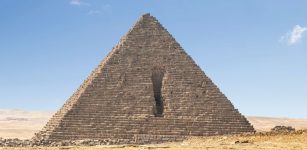 Mysterious Pyramid Of Menkaure Remains An Ancient Puzzle
Civilizations | Oct 8, 2022
Mysterious Pyramid Of Menkaure Remains An Ancient Puzzle
Civilizations | Oct 8, 2022 -
 Elizabeth Woodville: Mother Of The Princes In The Tower And Commoner Queen
Featured Stories | Jul 16, 2018
Elizabeth Woodville: Mother Of The Princes In The Tower And Commoner Queen
Featured Stories | Jul 16, 2018 -
 Viking Artifacts Discovered In Canada Are More Mysterious Than First Thought
Featured Stories | Apr 3, 2024
Viking Artifacts Discovered In Canada Are More Mysterious Than First Thought
Featured Stories | Apr 3, 2024 -
 Afterlife: Ancient Egyptian Mummification Balms Studied
Archaeology | Aug 31, 2023
Afterlife: Ancient Egyptian Mummification Balms Studied
Archaeology | Aug 31, 2023 -
 Eye Of Horus – Powerful, Ancient Egyptian Symbol With Deep Meaning
Ancient Symbols | Jan 21, 2019
Eye Of Horus – Powerful, Ancient Egyptian Symbol With Deep Meaning
Ancient Symbols | Jan 21, 2019 -
 On This Day In History: Black Death Arrived In Britain – On June 24, 1348
News | Jun 24, 2016
On This Day In History: Black Death Arrived In Britain – On June 24, 1348
News | Jun 24, 2016 -
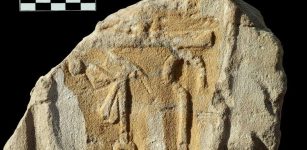 Gebel El Silsila: Remains Of Long-Lost New Kingdom Temple Found
Civilizations | May 19, 2015
Gebel El Silsila: Remains Of Long-Lost New Kingdom Temple Found
Civilizations | May 19, 2015 -
 New Light On The Complex Evolution Of Our Feet
Evolution | Nov 22, 2023
New Light On The Complex Evolution Of Our Feet
Evolution | Nov 22, 2023 -
 King Charles II Of England Banned Coffeehouses In 1675
Ancient History Facts | Jun 18, 2018
King Charles II Of England Banned Coffeehouses In 1675
Ancient History Facts | Jun 18, 2018

